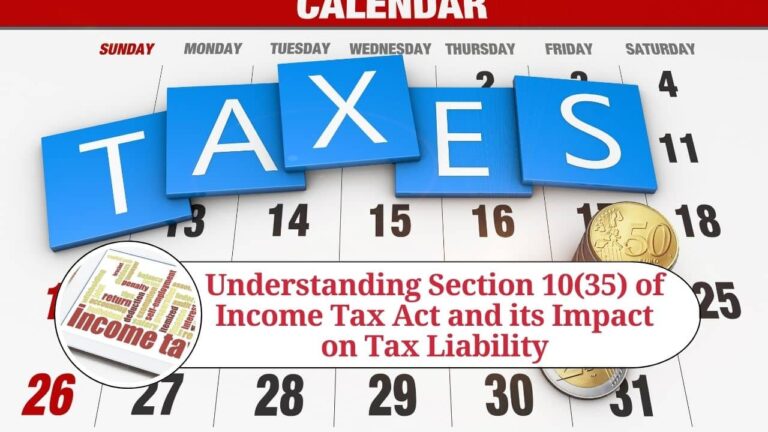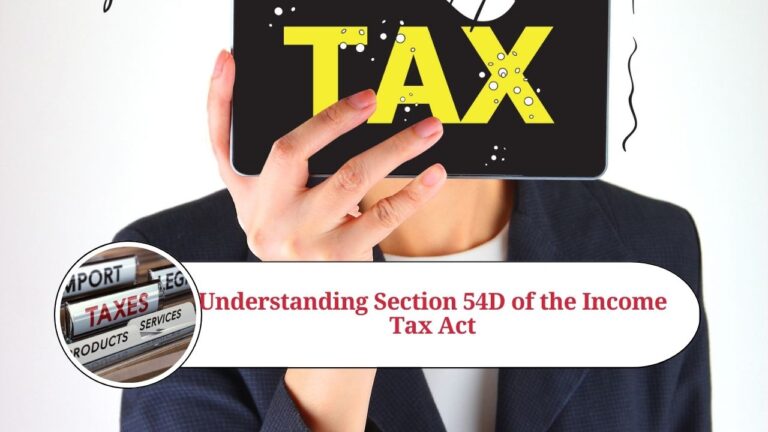Comprehensive Guide to Section 14 of the Income Tax Act
Introduction
Section 14 of the Income Tax Act is crucial for understanding the classification and computation of total income for tax purposes. This section outlines the various heads under which income must be categorized to determine the applicable tax rates and deductions. With several amendments and interpretations by the judiciary, Section 14 remains a cornerstone for tax professionals and taxpayers alike.
Heads of Income Under Section 14
Section 14 classifies income into the following five heads:
Salaries:
This includes all income derived from an employer-employee relationship.
Income from House Property:
Income earned from letting out property is taxed under this head.
Profits and Gains of Business or Profession:
Income from any trade, commerce, or professional activity falls here.
Capital Gains:
Profits from the sale of capital assets such as property or stocks are included.
Income from Other Sources:
Any income not covered under the above heads is taxed here.

Detailed Breakdown of Each Head
1. Salaries
The “Salaries” head encompasses various forms of compensation received by an individual from their employer. This includes basic salary, allowances, perquisites, and bonuses. Taxability under this head is based on the receipt or accrual basis, whichever is earlier. Important sections under this head include:
Section 17:
Defines salary and its components.
Section 16:
Provides deductions from salary income.
2. Income from House Property
This head deals with income earned from owning property, such as rental income. It also includes notional income from property that is not actually let out. Deductions available under this head include:
Section 24:
Deductions for interest on borrowed capital and standard deduction of 30% of net annual value.
3. Profits and Gains of Business or Profession
Income from any trade, profession, or business is categorized here. It includes profits earned from the regular course of business and any speculative income. Key sections include:
Section 28:
Defines income chargeable under this head.
Section 30 to 37:
Provide specific deductions for business expenses, depreciation, and other allowances.
4. Capital Gains
This head pertains to the profits from the sale of capital assets, such as real estate, stocks, and bonds. Capital gains are further classified into short-term and long-term, based on the holding period of the asset. Important sections include:
Section 45:
Deals with the capital gains tax.
Section 54 to 54GB:
Provide exemptions for reinvestment of capital gains.
5. Income from Other Sources
This is a residual head that covers all other incomes not specifically mentioned in the above heads. Examples include dividends, interest income, winnings from lotteries, and gifts. Important sections include:
Section 56:
Defines income chargeable under this head.
Section 57:
Provides deductions available under this head.
Legislative Amendments
The Finance Act of 1988 brought significant changes to Section 14, particularly in how interest on securities is treated. Previously considered a separate head, interest on securities is now assessed under “Profits and Gains of Business or Profession” or “Income from Other Sources,” depending on whether the securities are held as stock-in-trade or investment. These changes, effective from April 1, 1989, aimed at simplifying and rationalizing tax assessments.
Importance of Section 14
Section 14 is not a charging section but a classification tool for income computation. It ensures that all income is allocated to specific heads for accurate tax calculation. This classification is mandatory, as highlighted in various judicial rulings, including those by the Supreme Court and High Courts. For instance, in the case of United Commercial Bank Ltd. v. CIT, it was emphasized that income falling under one head cannot be taxed under another.
Section 14A: Expenditure Incurred in Relation to Exempt Income
Introduced by the Finance Act of 2001, Section 14A disallows deductions for expenses incurred in relation to income that does not form part of the total income. This provision has been pivotal in preventing the misuse of tax exemptions. Key points include:
Retrospective Effect:
Although introduced in 2001, Section 14A applies retrospectively from April 1, 1962.
Judicial Clarifications:
In Godrej & Boyce Manufacturing Co. Ltd. v. Deputy CIT, the Supreme Court upheld the application of Section 14A, clarifying its retrospective nature.
Practical Implications
Understanding Section 14 is vital for both taxpayers and professionals for several reasons:
Accurate Tax Filing:
Proper classification ensures accurate tax filing and compliance with the law.
Optimal Tax Planning:
Knowledge of various heads and related deductions aids in effective tax planning.
Avoidance of Penalties:
Misclassification of income can lead to penalties and interest charges from tax authorities.
Frequently Asked Questions (FAQ)
Q1: What is Section 14 of the Income Tax Act?
A1: Section 14 of the Income Tax Act classifies income into five heads: Salaries, Income from House Property, Profits and Gains of Business or Profession, Capital Gains, and Income from Other Sources. This classification helps in the accurate computation of taxable income.
Q2: Why is Section 14 important for taxpayers?
A2: Section 14 ensures that income is appropriately categorized, which is crucial for determining the applicable tax rates and deductions. This classification aids in accurate tax assessment and compliance.
Q3: How does Section 14A relate to Section 14?
A3: Section 14A, introduced by the Finance Act of 2001, disallows deductions for expenses incurred in relation to income that does not form part of the total income. It ensures that tax exemptions are not misused by claiming expenses on exempt income.
Q4: Can income from one head be taxed under another head as per Section 14?
A4: No, income falling under a specific head cannot be taxed under another head. Judicial rulings have emphasized the importance of adhering to the classification provided in Section 14.
Q5: What were the significant changes introduced by the Finance Act of 1988 in relation to Section 14?
A5: The Finance Act of 1988 reclassified interest on securities from a separate head to “Profits and Gains of Business or Profession” or “Income from Other Sources,” depending on their nature. This amendment aimed to simplify tax assessments.
Q6: Is Section 14A applicable retrospectively?
A6: Yes, Section 14A applies retrospectively from April 1, 1962, despite being introduced in 2001. This was upheld by the Supreme Court in various rulings.
Q7: How can taxpayers ensure compliance with Section 14?
A7: Taxpayers should accurately classify their income under the correct heads, stay updated with legislative amendments, and consult with tax professionals to ensure compliance.
Q8: What are the consequences of misclassifying income under Section 14?
A8: Misclassifying income can lead to incorrect tax computation, potential penalties, interest charges, and scrutiny from tax authorities.
Conclusion
Section 14 of the Income Tax Act plays a vital role in the categorization and computation of taxable income in India. By ensuring income is appropriately classified under specific heads, it aids in accurate tax assessment and compliance. Understanding the nuances of Section 14 and its amendments is essential for taxpayers and professionals to navigate the complexities of income tax effectively.
For more information and expert advice on tax planning and compliance, visit SmartTaxSaver.




